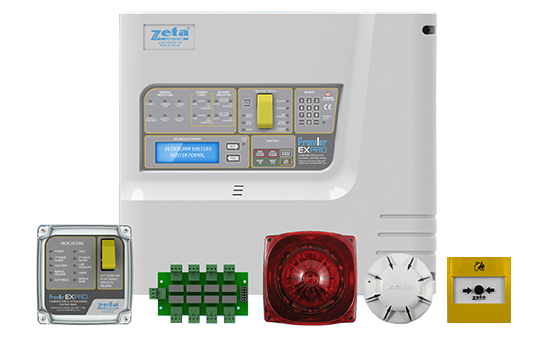
Extinguishing systems are primarily used for the automatic protection of expensive electronic equipment, such as network servers, etc. which may be left unmanned for long periods of time.
They work on the principle that 2 detection zones are fitted to the area to be protected, and that both zones should detect a fire before the extinguishing agent is released. (This is to avoid the possibility of releasing the expensive gas in the event of a false alarm).
When one zone detects an alarm, the control panel will indicate this, and start the first stage sounders. When the second zone goes into alarm, the control panel will indicate this. It will then stop the first stage sounders, and start the second stage sounders, which will have a different tone. The panel will also start the bottle release timer. This is the delay between the start of the second stage alarm, and the extinguishing gas being released. When the timer ends, the bottle output activates, and the gas is released.
Most extinguishing panels will also have inputs to initiate a manual release of the gas, or to hold or abort the release of the gas. They may also have the option to be switched to a Manual only mode, so that the detectors will not initiate a release.








